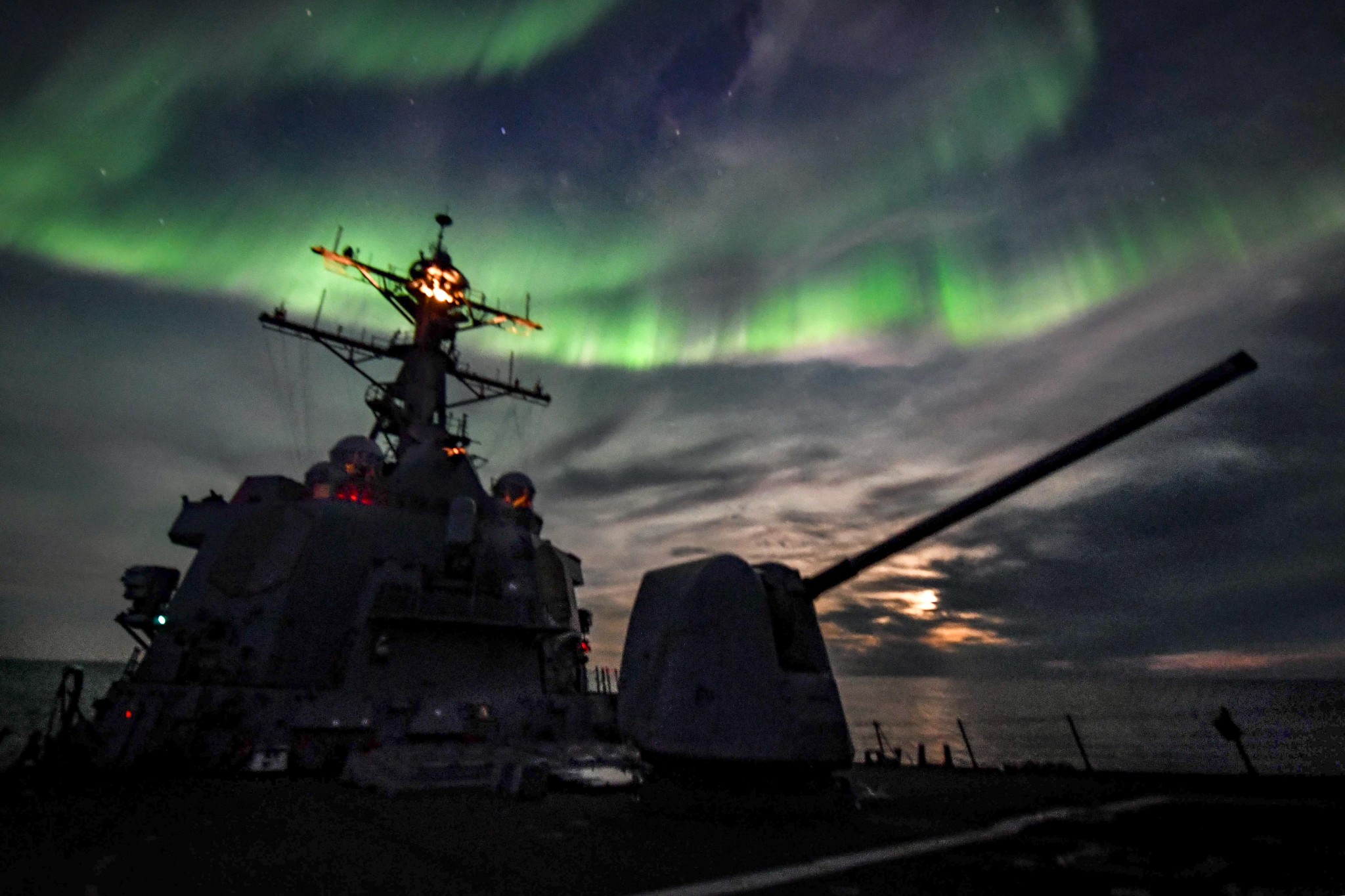 Photo Credit: Department of Defense
Photo Credit: Department of Defense
The Geopolitics of Arctic Warming
The Department of Defense conceptualizes climate change as an abstract security challenge – a “threat multiplier” that can accelerate, exacerbate, or set in motion – but not precipitate – conflict. In the 2030s and beyond, however, there will be a paradigm shift that forces policymakers, analysts, and strategists to also contend with the direct consequences of climate change on geopolitical positions and the balance of power. Nowhere is this phenomenon more visible and imminent than the Arctic Circle, where retreating ice shelves will soon modify the fundamental characteristics of regional geography.
Russia, for instance, stands to both gain and lose strategic advantages due to the melting Arctic. Certainly, ice-free Arctic waterways and coastlines will ameliorate the pressure on Russia to expand its frontiers along the Black Sea. Russia’s pursuit of perennial warm-water ports and securing unencumbered access to global sea lines of communication is an established imperative in Russian grand strategy extending back to the reign of Peter the Great. In essence, Russia needs ports that can handle commerce and support naval power projection without interruption from winter freezes, a standard most of its ports fail to meet. Indeed, well before Putin gambled with absorbing Ukraine altogether, he made certain to capture Crimea and its warm deep-water jewel of Sevastopol.
Yet, Arctic climate change imposes greater liabilities on Russia’s geostrategic position than it offers. Particularly, as Arctic temperatures rise, Russia’s northern coastline and infrastructure are likely to suffer destabilizing levels of erosion from thawing permafrost, which will compound with rising tides. Russia’s paramount challenge from ice-free Arctic waters, however, will be the under-protected new flank along its substantial 15,000 mile northern coastline. Russia was plugging this security gap with a steady Arctic re-militarization until the Ukraine war derailed those efforts. Now, Russia is diverting military and economic resources that could otherwise be going towards polar fortification and port infrastructure, leaving this front exposed likely until the far future. Moreover, a defrosted Arctic Ocean deprives Russia’s submarine-based nuclear deterrent of concealment underneath the ice sheets. Accounting for these costs, climate change is likely to transform Russia into a less secure state that is also more likely to overcompensate for newfound vulnerability with belligerence.
Another challenge posed by the warming Arctic will be the emergence of trade routes that empower Chinese commercial interests. Arctic shipping corridors, including the seasonally traversable Northwest Passage, Northern Sea Route, and the prospective but currently nonviable Transpolar Sea Route, hold immense promise for revolutionizing global supply chains. A journey from Europe to Asia can take 22 days via the Suez Canal versus 10 days through the Arctic, with the potential to outpace overland Silk Road rail routes, resulting in appreciable fuel and opportunity cost savings. Container ships transiting the Panama and Suez Canals must also cap their cargo tonnage to control how deep they sit in the water, a limitation that Arctic shipping routes don’t have. Not to mention, these canals are prone to blockages like the Ever Given incident, which cost the global economy $60 Billion. However, the benefits of Arctic trade mainly accrue to China since these shipping lanes compress the distance between Asia and Europe without improving upon routes from the U.S. If warming sufficiently diminishes Arctic ice, then China will enjoy easier access to European markets. In addition to commercial earnings, China could exploit these new inroads to expand its market share of European imports and exports, a maneuver that would likely be accompanied by greater influence and leverage. Of course, raw economic gains are also readily translatable into military power. Ultimately, with its Polar Silk Road initiative, China intends to take full advantage of the commercial opportunities afforded by the warming Arctic to further realize its hegemonic ambitions.
Moreover, the U.S. may feel compelled to assert itself in the Arctic in order to seize its vast rare earth element (REE) deposits, not for the sake of wealth but because China’s multi-decade push to consolidate control over global REE supply chains leaves the U.S. with few other options. Indeed, the Department of Defense recently halted the delivery of F-35s after discovering that an engine subcomponent was being made with a cobalt and samarium alloy from China. Clearly, for the U.S. to continue furnishing its armed forces with advanced equipment and maintain an edge in the military balance of power by extension, it will need to secure new REE supply chains that are ideally defensible and closer to home.
Like it or not, geography is a determinant of security. As warming reshapes the Arctic theatre, American strategists should also anticipate how this will reshape the priorities, calculus, and behavior of its adversaries.





